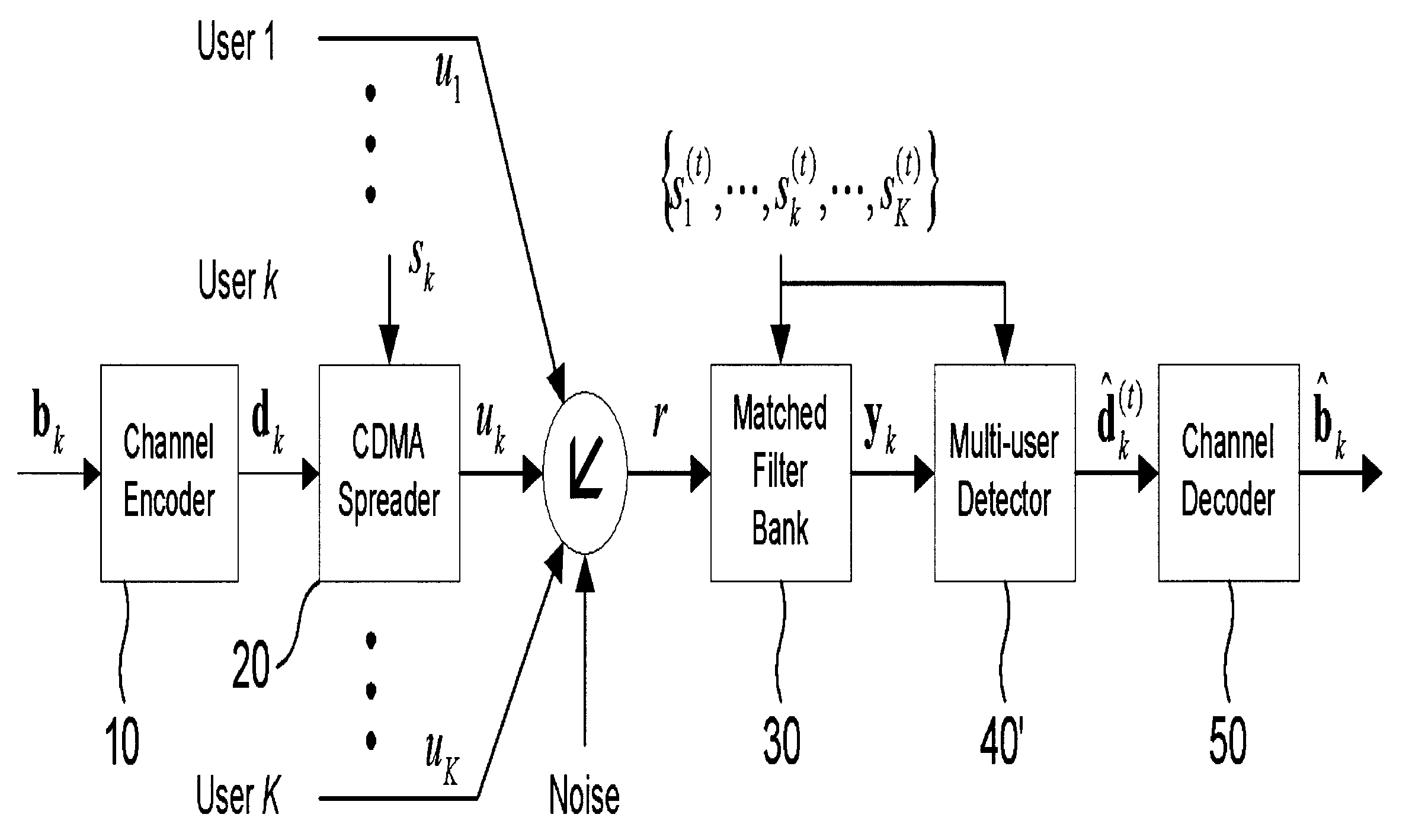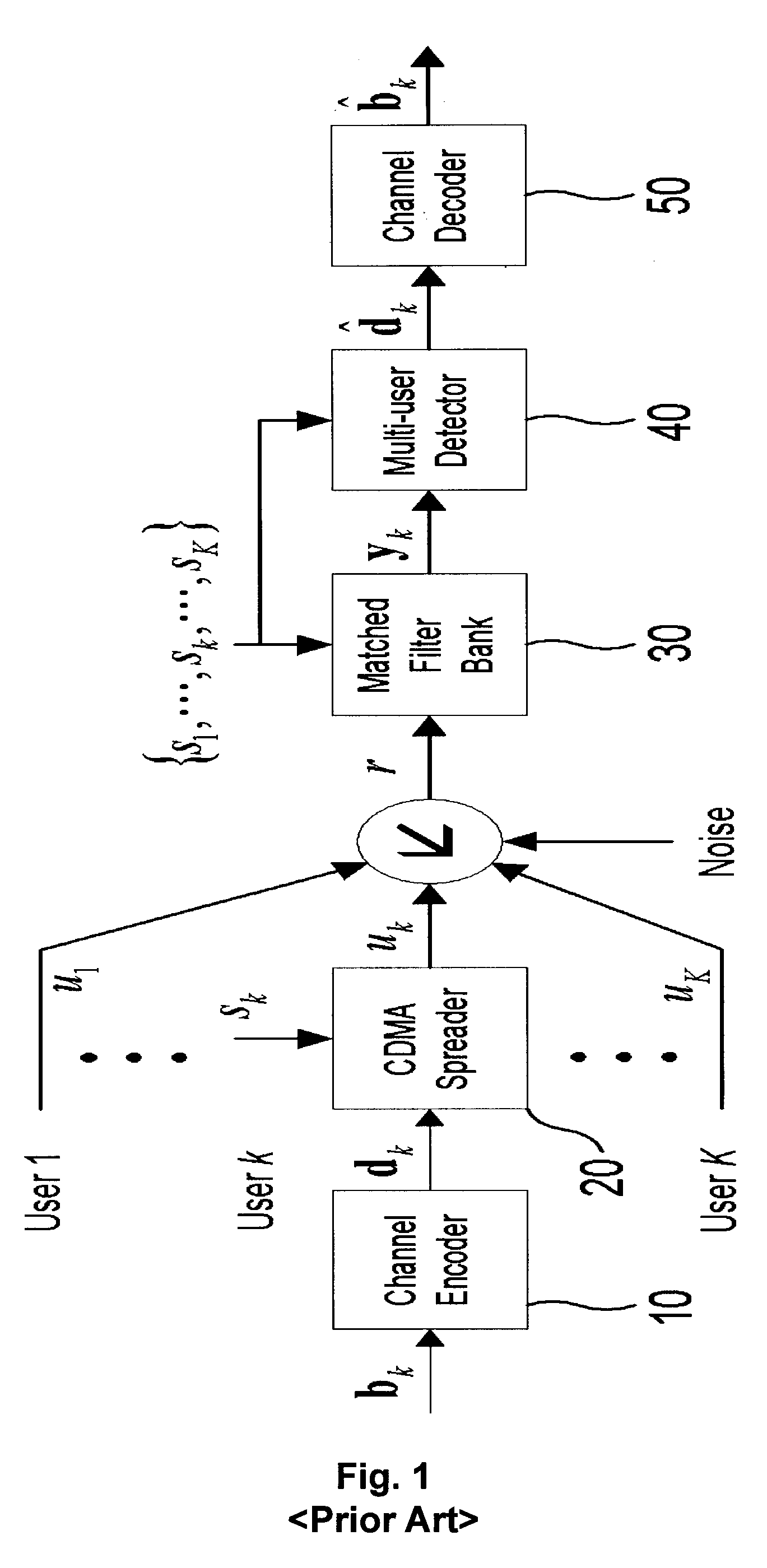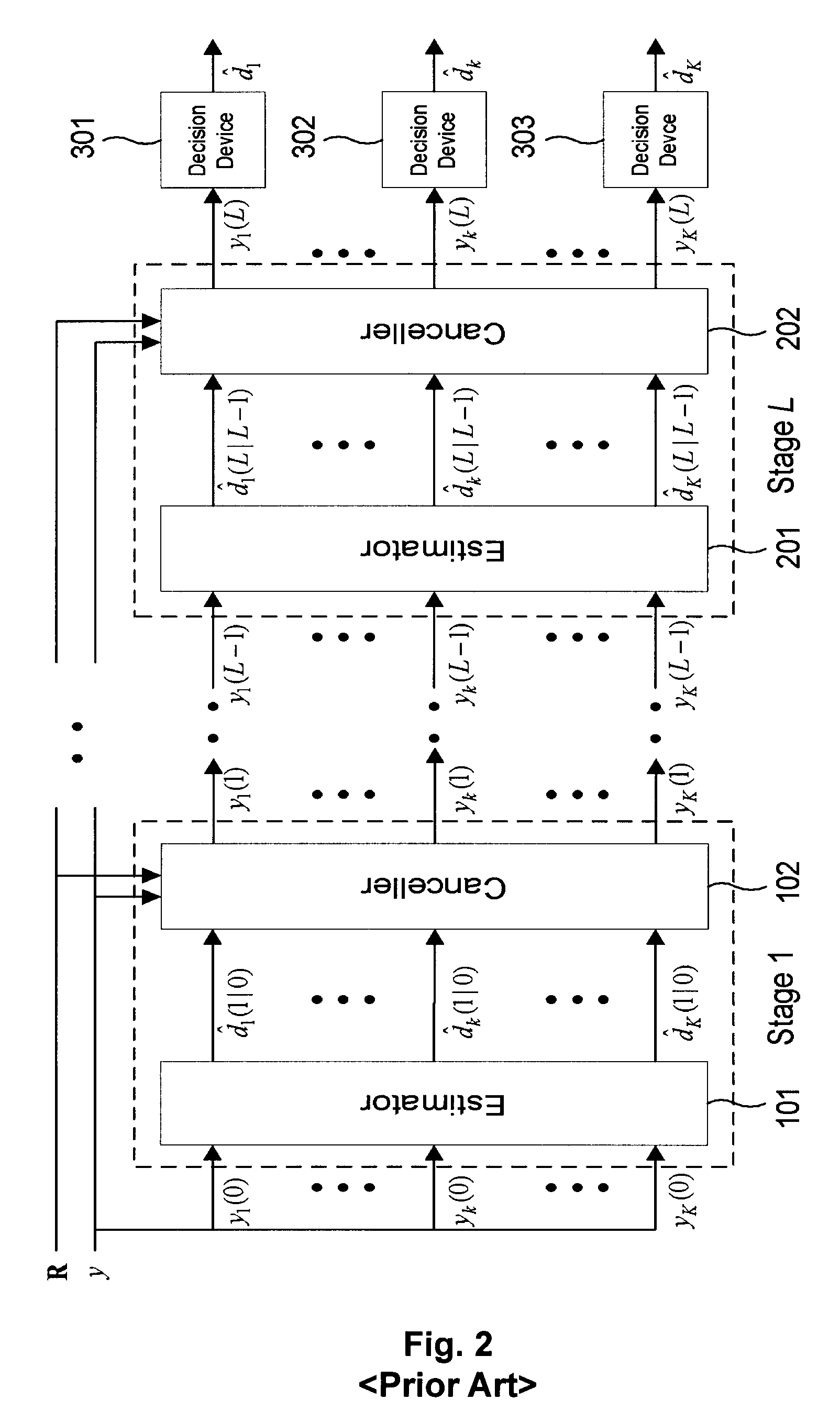Joint detection-decoding receiver of ds-cdma system
- Summary
- Abstract
- Description
- Claims
- Application Information
AI Technical Summary
Benefits of technology
Problems solved by technology
Method used
Image
Examples
Embodiment Construction
[0025]The above-described objects and other objects and characteristics and advantages of the present invention will now be described in detail with reference to the accompanied drawings.
[0026]FIG. 3 is a block diagram illustrating a multi-user detection tranceiving system of a DS-CDMA system in accordance with the present invention.
[0027]Referring to FIG. 3, a sequence of information bits bk of a user k is encoded into a sequence of channel symbols dk, and the sequence of channel symbols dk is transmitted via a multi-user channel. The transmitted sequence is received by the receiver of the present invention.
[0028]The JDD receiver in accordance with the present invention comprises a matched filter bank 30, a multi-user detector 40′ and a channel decoder 50. The matched filter bank 30 and the channel decoder 50 are similar to those of FIG. 1. Therefore, a detailed description is omitted.
[0029]The multi-user detector 40′ will now be described in detail.
[0030]FIG. 4 is a block diagram ...
PUM
 Login to View More
Login to View More Abstract
Description
Claims
Application Information
 Login to View More
Login to View More - R&D
- Intellectual Property
- Life Sciences
- Materials
- Tech Scout
- Unparalleled Data Quality
- Higher Quality Content
- 60% Fewer Hallucinations
Browse by: Latest US Patents, China's latest patents, Technical Efficacy Thesaurus, Application Domain, Technology Topic, Popular Technical Reports.
© 2025 PatSnap. All rights reserved.Legal|Privacy policy|Modern Slavery Act Transparency Statement|Sitemap|About US| Contact US: help@patsnap.com



